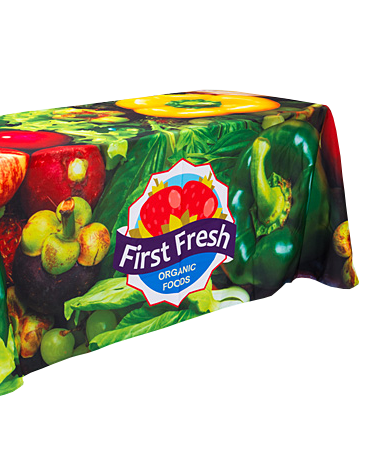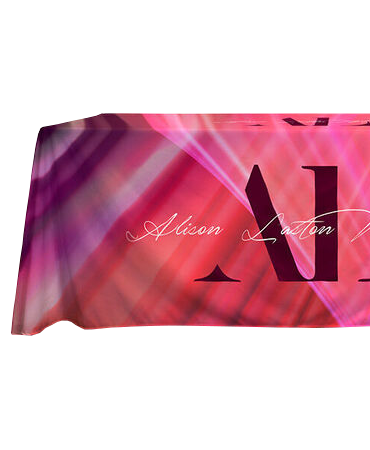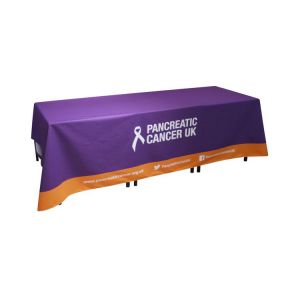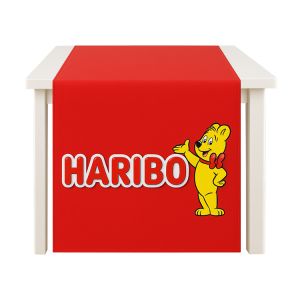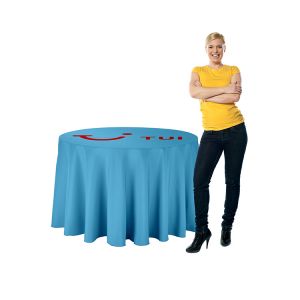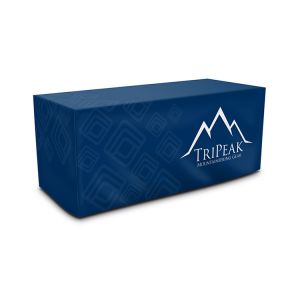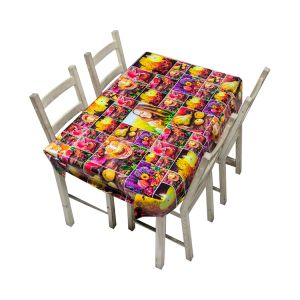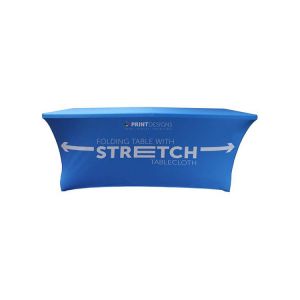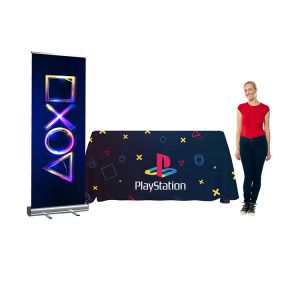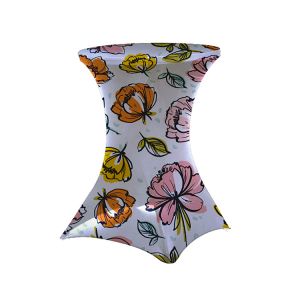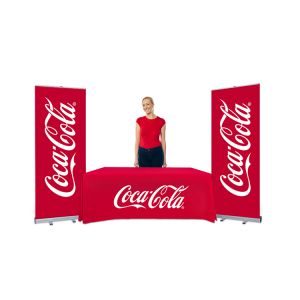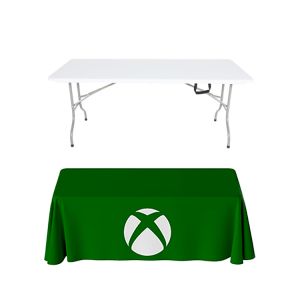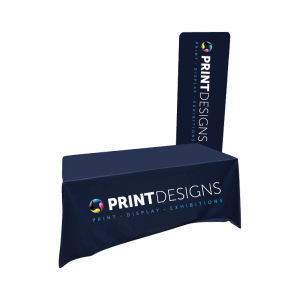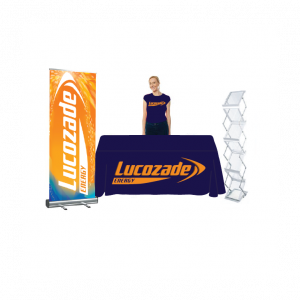Our branded tablecloths are designed to impress, with vibrant, long-lasting prints that reflect your brand at its best. Whether you need a company-printed tablecloth, a promotional design or a full logo print, as a trusted printer we provide tailored solutions for every event setup, from exhibitions to business environments.
Benefits of Our Branded Tablecloths
Premium Features You Can Rely On
Our branded tablecloth printing uses advanced dye-sublimation, producing vivid, full-surface CMYK prints that won’t crack, peel or fade. This process bonds the ink directly into the fabric, giving you a smooth, high-end finish across every inch of your custom design.
We use soft-touch, DIN4102 Class B1 fire-rated polyester – a material that's not only colourfast and easy to maintain, but also suitable for indoor and short-term outdoor use.
Choose from a variety of styles and formats:
All of our exhibition tablecloths are printed to order with no minimum quantity and we can deliver in as little as 1–2 working days.
Use Cases for Your Custom Printed Tablecloth
Whether you're preparing for an expo or hosting an event, a branded tablecloth makes your business stand out. They're a popular choice across industries such as:
Trade Shows & Expos
At busy exhibitions, your branded tablecloth draws attention, enhances your booth setup and reinforces your message.
Hospitality & Retail
In hotels, restaurants or event spaces, a table cover branded with your logo adds a touch of elegance and consistency.
Corporate Events & Education
From networking events to university fairs, printed tablecloths with logos offer a smart, cohesive brand experience.
Printed tablecloths with logos provide a cohesive brand presence that customers recognise and trust.
Why Choose Us as Your tablecloth Printers?
As large-format print specialists with over 27 years experience, we combine speed with outstanding quality and customer care. We never charge setup fees and our in-house team makes sure your artwork is perfectly scaled and colour-checked before printing.
Need help creating your artwork? Our design experts can assist with layout and visual impact or take on the full design process for you.
“Printdesigns produce all our exhibition equipment and also produce graphics for other projects. They are very professional to deal with, particularly the graphic design element.” - Bruce Robertson, Google Reviews
“A first class company to deal with. Very quick to respond to emails, quick to deal with questions, and excellent results. A very very good service.” - Mark Banin, Trustpilot
Caring for Your Business tablecloths
To keep your branded tablecloths in top condition:
Our materials are 100% polyester, eco-conscious and can be recycled with other textiles. They're printed using water-based inks with no VOCs, ensuring a more sustainable promotional product.

